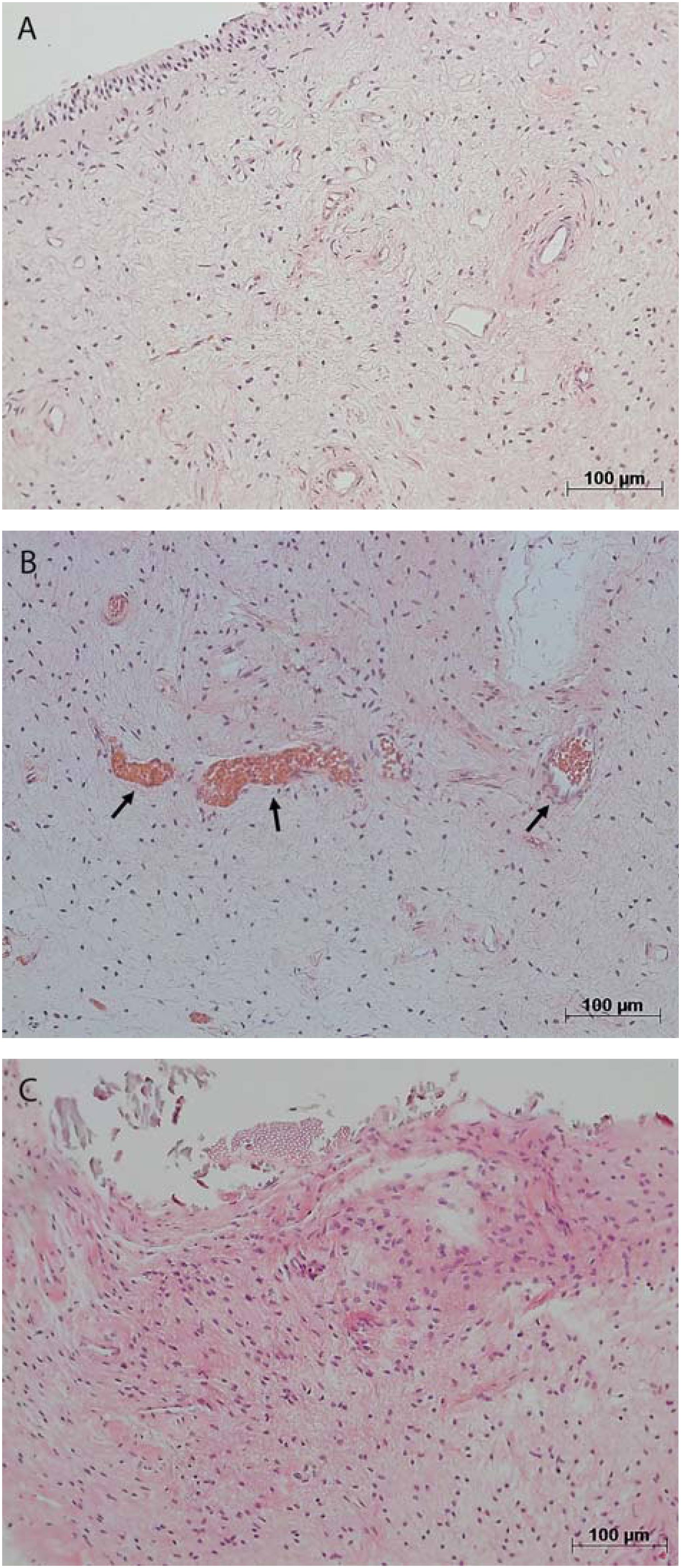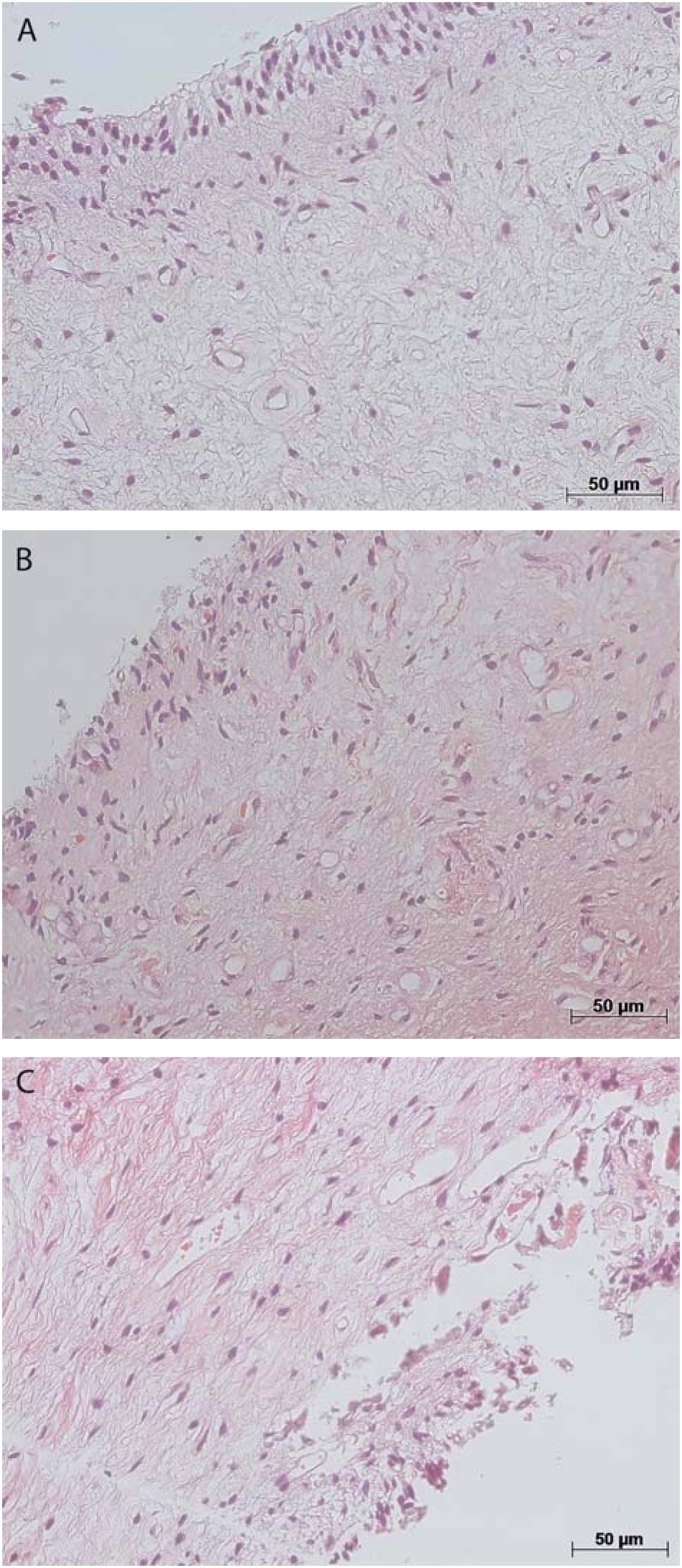ABSTRACT
Tooth bleaching is a technique of choice to obtain a harmonious smile, but bleaching agents may damage the dental pulp.
Objective:
This study evaluated the inflammatory responses of human dental pulp after the use of two bleaching techniques.
Material and Methods:
Pulp samples were collected from human third molars extracted for orthodontic reasons and divided into three groups: control - no tooth bleaching (CG) (n=7); at-home bleaching with 15% carbamide peroxide (AH) (n = 10), and in-office bleaching with 38% hydrogen peroxide (IO) (n=12). Pulps were removed and stained with hematoxylin-eosin for microscopic analysis of inflammation intensity, collagen degradation, and pulp tissue organization. Immunohistochemistry was used to detect mast cells (tryptase+), blood vessels (CD31+), and macrophages (CD68+). Chi-square, Kruskal-Wallis, and Mann Whitney tests were used for statistical analysis. The level of significance was set at p<.05.
Results:
The inflammation intensity and the number of macrophages were significantly greater in IO than in AH and CG (p<0.05). The results of CD31+ (blood vessels per mm2) were similar in CG (61.39±20.03), AH (52.29±27.62), and IO (57.43±8.69) groups (p>0.05). No mast cells were found in the pulp samples analyzed.
Conclusion:
In-office bleaching with 38% hydrogen peroxide resulted in more intense inflammation, higher macrophages migration, and greater pulp damage then at-home bleaching with 15% carbamide peroxide, however, these bleaching techniques did not induce migration of mast cells and increased the number of blood vessels.
Keywords:
Tooth bleaching; Inflammation; Dental pulp; Microscopy; Immunohistochemistry




